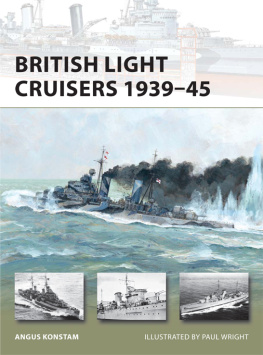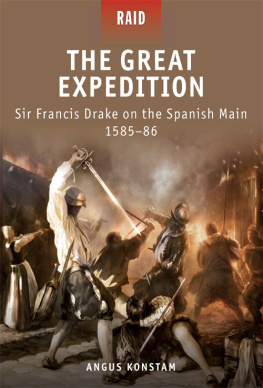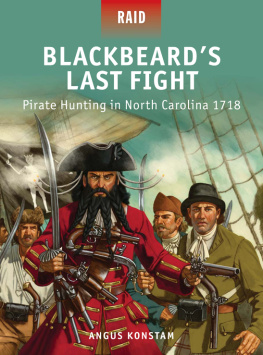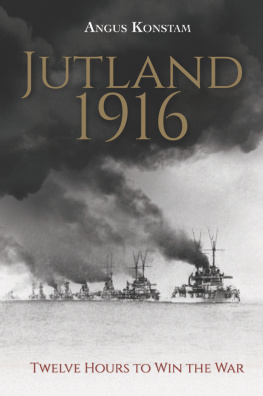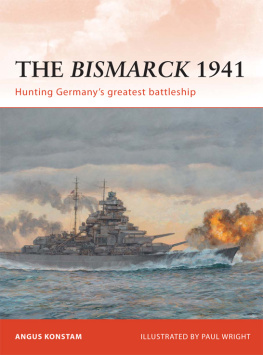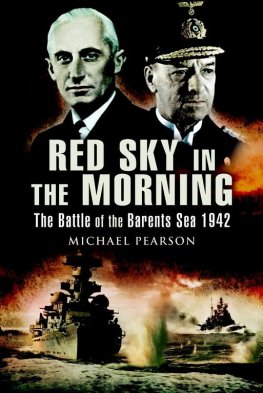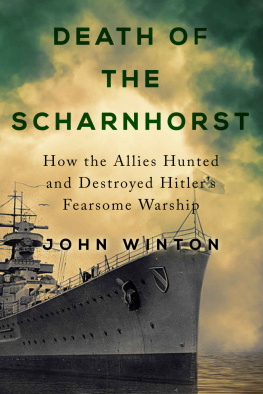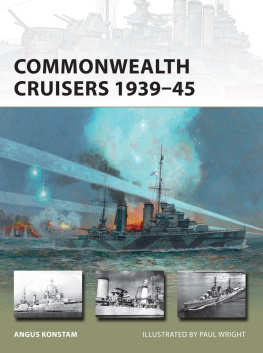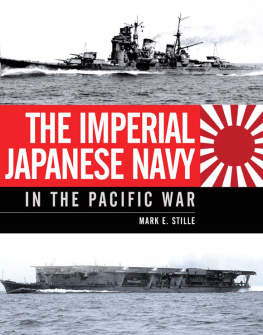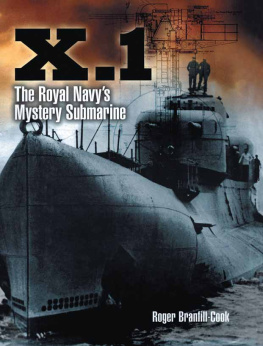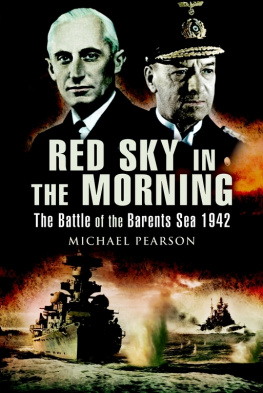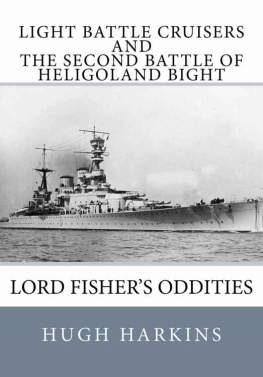NEW VANGUARD 194
BRITISH LIGHT CRUISERS 193945
| ANGUS KONSTAM | ILLUSTRATED BY PAUL WRIGHT |
CONTENTS
BRITISH LIGHT CRUISERS 193945
INTRODUCTION
It is frequently claimed that military or naval forces were often designed for the previous war rather than the one in which they are currently engaged. However, this is not really true of the Royal Navy during the period between the two world wars, although the Admiralty was certainly slow to recognize the growing threat posed by aircraft and U-Boats. A far more serious handicap than old-fashioned thinking was the limitations imposed on the Admiralty by diplomacy and economics. The Washington Naval Treaty (1922) which set limits on national navies size and tonnage in an attempt to avoid future conflicts, led to a concentration on building heavy (8-inch gun) cruisers throughout the decade. Then in 1929 came the Wall Street Crash and the onset of an international recession.
In order for governments to save money a new treaty was negotiated at the London Naval Conference of 1930, and as a result Britain switched from building heavy, 8-inch gun cruisers to smaller and cheaper 6-inch gun ones. These were soon labelled light cruisers. Britain was still constrained by budget and treaty obligations, so the first classes of these were small and lightly armed. However, during the years immediately before the outbreak of World War II, the first of a new series of light cruisers were commissioned which were as powerful as they were fast and sleek. With the wartime additions of radar and fire control systems, these and the cruisers that followed them would be amongst the best warships of their kind in the world.
During World War II, these light cruisers proved their worth in every naval theatre in the Arctic, the Atlantic, the Mediterranean, the Indian Ocean and the Pacific. However, it was the gruelling challenge posed by the naval war in the Mediterranean and in operations in support of the Arctic convoys that proved the greatest test for these warships. Despite losses and damage caused by surface ships, U-Boats and enemy aircraft, these versatile warships and their hard-pressed crews proved their worth in action, and played a major part in securing victory in both of these key theatres. This is the story of these important British warships and of the men who served in them.
HMS Leander, pictured two years before the outbreak of the war, with her new twin-mounted 4-inch AA guns visible, as well as her newly fitted Supermarine Walrus seaplane. When war broke out only Achilles was still fitted with her original single 4-inch mounts.
In this book we shall look at their development and design, at their armament and the way they fought. However, unlike previous titles such as British Heavy Cruisers, with 65 warships to deal with, lack of space prevents giving more than a summary of the operational history for each of these vessels. However, this allows us to delve a little deeper into other areas, such as gunnery and performance. A book of this size can never be more than a useful summary of the subject, but we hope it captures the nature and abilities of these warships which for six long years remained at the forefront of Britains naval war.
DESIGN AND DEVELOPMENT
During World War I Britain was able to deploy the largest cruiser fleet in the world. These 86 warships were divided by type and role, but essentially they fell into two main categories those designed to protect trade routes, and those that operated in support of the Grand Fleet. While there was some degree of crossover between these two roles, the division remained in place until the early 1930s. Armoured cruisers were a category in their own right, built to a flawed design that evolved into the battlecruiser. The faults of these two warship types were exposed at the battle of Jutland in 1916, and therefore represent something of a dead end in terms of warship design. A far more versatile warship was the scout cruiser (or North Sea cruiser), a ship type that eventually evolved into the British light cruiser of World War II.
During the war the British built an additional 44 cruisers, mainly small ones, designed to be used in the North Sea. The war saw no great technical advances in warship design, although oil-fired boilers gradually replaced coal-fired ones, and the growing threat of air attack led to the provision of anti-aircraft guns. The real arbiter of British cruiser design was diplomacy the naval treaties whose constraints helped shape the worlds navies during the inter-war years. As a result of the Washington Naval Treaty the emphasis shifted to the building of powerful new cruisers, designed to make the most of the treaty limit of cruisers of 10,000 tons armed with 8-inch guns.
A combination of obsolescence and post-war cuts led to the scrapping or selling of much of the Royal Navys wartime cruiser fleet. By 1930 only 42 cruisers that were built before or during the war remained in British service, and of these seven were in the process of being decommissioned. Three more cruisers of the Hawkins class carried 7.5-inch guns, and were more akin to the large 8-inch cruisers that were entering service than the rest of the old wartime fleet. All of the remaining 6-inch gun cruisers were C, D or E class vessels, launched during or shortly after the war. While these ageing 6-inch ships had been joined by 11 new 8-inch cruisers, and more of them were being built, this cruiser fleet had to perform the same duties that a pre-war fleet of twice its size had done.
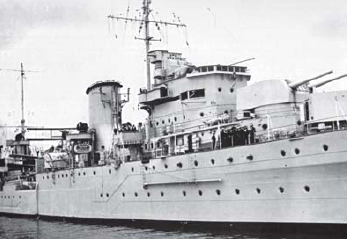
A close-up view of the Leander class cruiser HMS Orion, pictured in 1937, showing the windbreak protecting her otherwise open bridge. Her masts were replaced with tripods before the outbreak of the war to carry her new Type 279 air warning radar.
It was clear that the Royal Navy needed more cruisers, and the expense of the 8-inch cruiser programme was already placing great demands on the naval budget. The Wall Street Crash of 1929 and the resulting economic downturn and global recession meant a greatly reduced naval budget and the cancellation of the navys long-term plans. To help the money stretch, the British government initiated a new series of naval disarmament talks, which it was hoped would negate the need to match the construction of other fleets in order to maintain the naval status quo. However, while the diplomats played their part, the Royal Navy would have to make the most of its existing cruiser fleet.
HMS Coventry, a Ceres class cruiser that lost her original 6-inch guns during the mid 1930s and was rearmed with ten 4-inch AA guns one forward, six on the beam, and three aft. She was bombed and sunk off Tobruk in September 1942.
The World War I Cruisers
In 1930, the Royal Navy had 25 C class cruisers, divided into six sub-classes: Caroline, Calliope, Centaur, Caledon, Ceres, and Carlisle. Of these, all but one of the four remaining warships of the Caroline class were earmarked for disposal, and the final ship would follow her sisters to the breakers yard in 1934. Similarly the eight surviving cruisers of the Calliope class and Centaur class would also be disposed of during the early 1930s as more modern 6-inch cruisers joined the fleet. They represented the oldest groups of C class cruisers, launched before 1916. The remaining three sub-classes 13 cruisers in total were larger and better armed, and so they were retained. So too were the eight larger D class cruisers, as well as the two E class cruisers that had been launched in 1919 and 1920.

